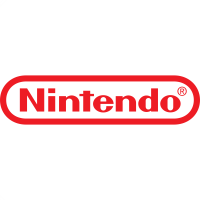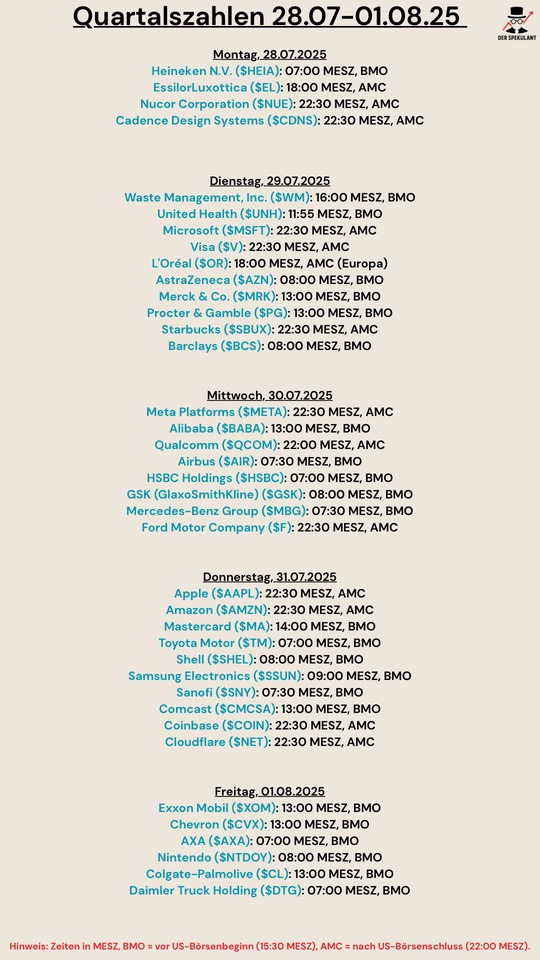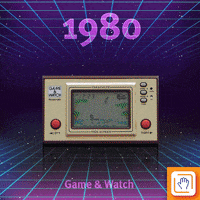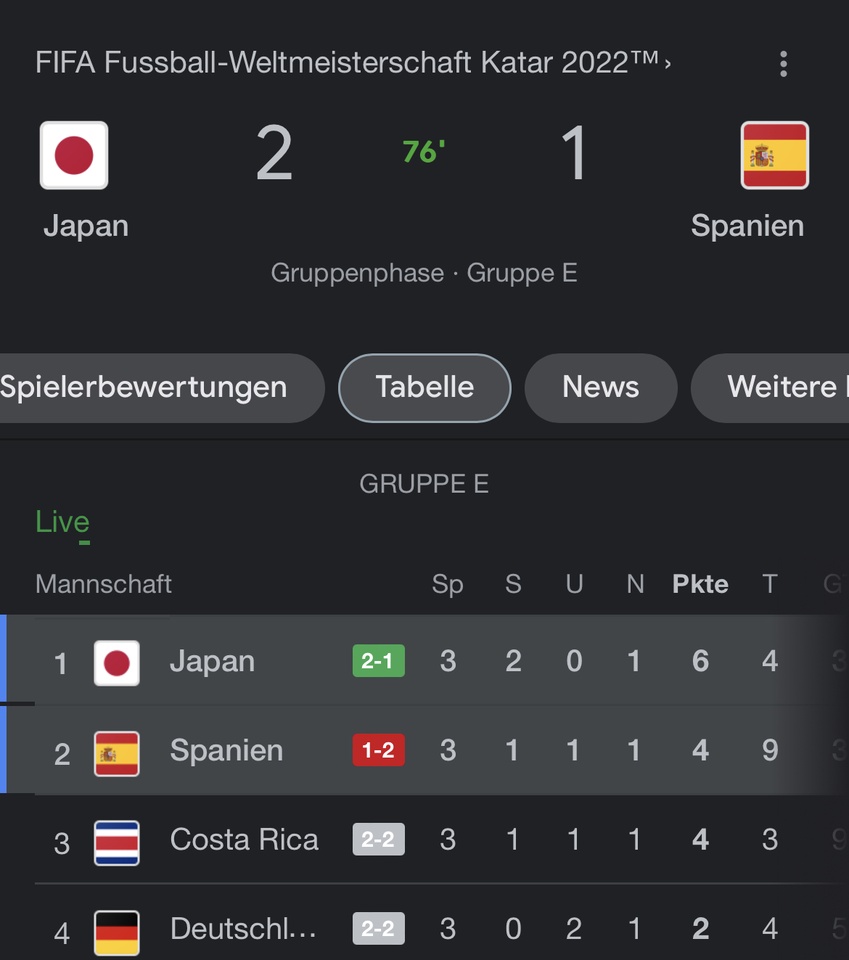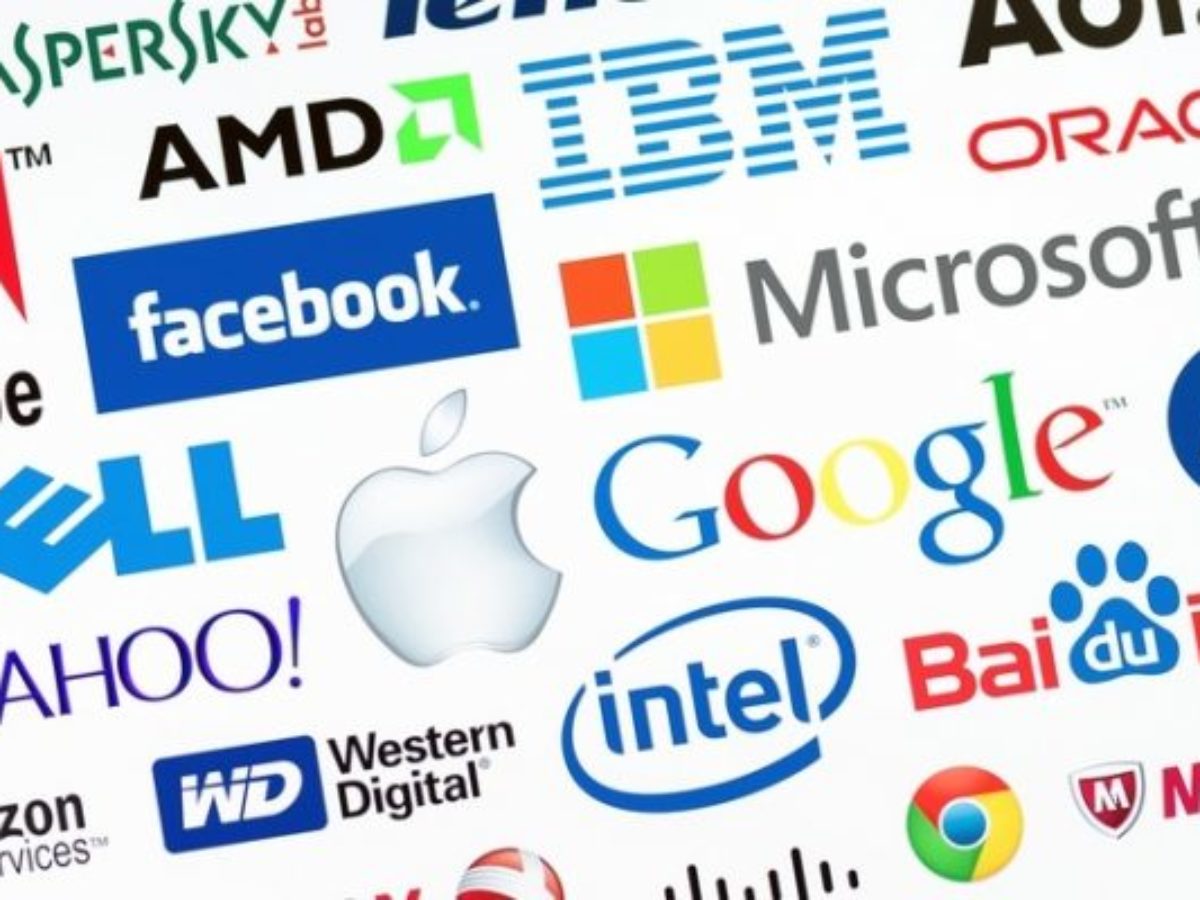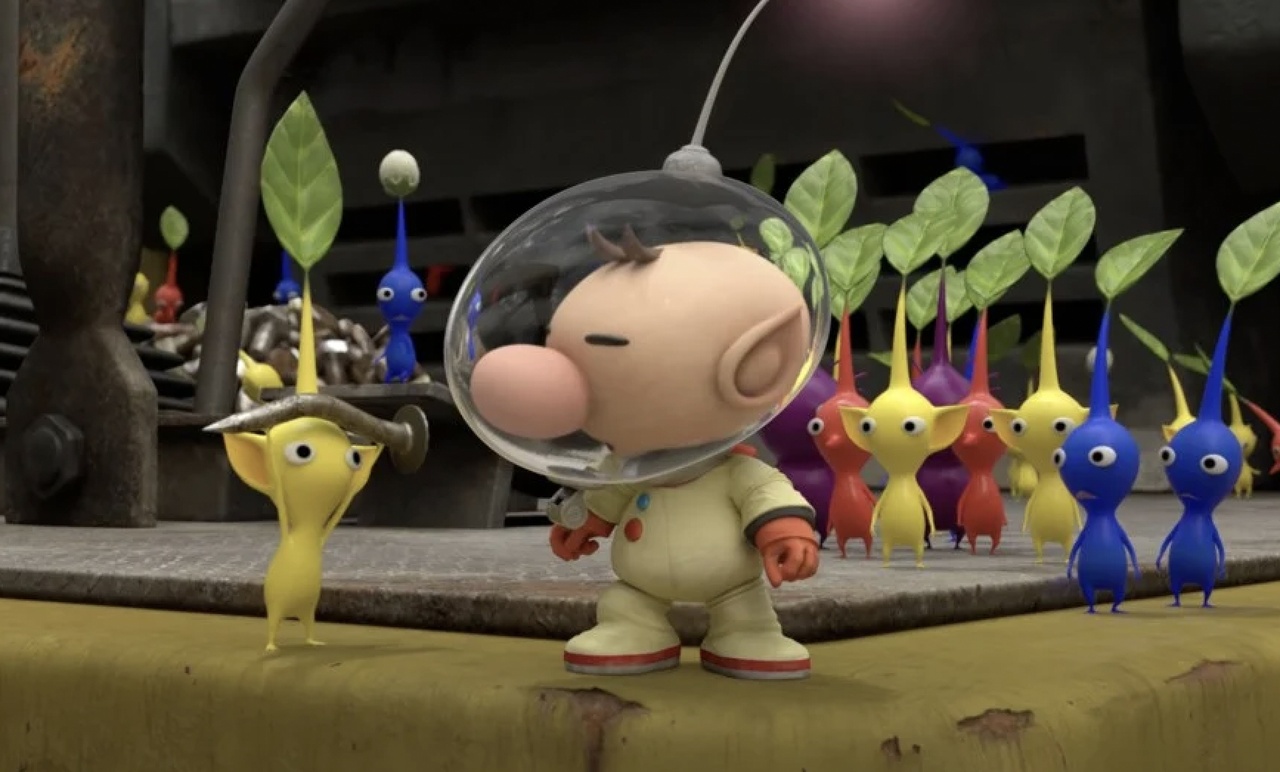Nintendo $7974 (-1,33%)
$NTDOY (-1,63%)
- the classic on the sidelines?
Kon'nichiwa, min'na!
Bass-T-desu. oppai ga suki.
Honjitsu wa, Nintendo o bunseki shimasu. Ketsuron omoshiroi-desu.
Watashi wa anata ni shirasenakereba (?) narimasen: Kinsen-tekina adobaisu arimasen.
And with that, I'll release you from my rudimentary knowledge of Japanese.
According to the last vote today we are talking about Nintendo. A company with which many of you will associate beautiful experiences. But do investors also burn so much for Nintendo's stock? Are there, besides Super Mario, Bowsette and co. Unique selling propositions for the company and what role does the dividend and stability play in times of rising case numbers to Corona, inflation and so on?
To discuss this, you can see my breakdown of my analysis below.
Beforehand as always my DisclaimerThis is not an investment advice. It is also not an invitation to buy and / or Vekauf of financial products. I describe here only my opinion and assume no liability. You have your own responsibility towards your investments.
I see the following as crucial:
1.Nintendo in numbers, data and facts
1.1Business areas and market environment of the classic - a strong competitor for Sony and co.?
1.2Company strategy and the share - strength through consistency?
2.my opinion on the share of Nintendo
Nintendo in numbers, data and facts 1.1 Business areas of the classic - a strong competitor for Sony?
Worldwide, Nintendo employs 7,136 people of which 2,765 employees belong to Nintendo co. Ltd.
Nintendo... who?
People like to think of Nintendo as the cuddly video game company somewhere at the end of the world in Japan. In fact, Nintendo operates globally as an umbrella company and as of November 2022 has 19 different Business Divisions, as I will call them below, each with its own purpose. There are 11 business divisions in this cluster that are regionally dependent. Here, Nintendo follows an interesting strategy that significant parts of entire continents are partially combined, while sometimes only a fixed point in a single European country is chosen. As an example, we can refer to "Nintendo of America Inc." in comparison to "Nintendo of France S.A.R.L." or also "Nintendo RU LLC.". It becomes obvious that Nintendo is active worldwide, but that this activity differs regionally (see (1)).
That was clear, wasn't it?
Rather not. If one had started at Marketscreener as an example and looked at the sales structure, it would have been noticeable that the sales do not directly match such a regional structure. While the USA, as the main market, achieved sales of JPY 633 billion, Europe was roughly behind with JPY 423.79 billion. In percentage terms, we hereby compare 37.3% of the USA with 25% Europe weighting. This is relatively exciting - although Nintendo as a stock is even listed in the Stoxx Asia Pacific 50 (!), has a market capitalization of 49.313 billion USD and has launched the Nintendo DS, the world's second best-selling console, its sales in the domestic market in Japan are only in third place with 21.2% sales share in 2022. Consequently, we are dealing with a company that is not affected by the home bias in terms of sales and has its two strongest markets in the U.S. and parts of Europe (see (2), (3), (4)).
Why "parts" of Europe?
As mentioned at the beginning, the cluster around the regional split with the 11 sub-companies is heavily focused on Western Germany and Russia in the East, respectively, when looking at the European continent. Nintendo makes no secret of the fact that the main drivers of the corporate structure in Western Europe are in Germany, France, etc. Locations in the Balkan region, i.e. everything that comes east of Germany, so to speak, are not directly encountered until Russia (see (3)).
What is the source of this sales strength?
Essentially, we are already familiar with all of Nintendo's brands and products. 5.1 billion games on 800 consoles sold, with the following brands providing the main impact for this enormous sales potential (cf. (3)):
- Mario
- Donkey Kong
- The Legend of Zelda
- Metroid Pokémon
- Animal Crossing
- ...
Consciously, only 6 brands of Nintendo's broad portfolio are mentioned here. It is these brands that to a certain extent ensure the continued existence of Nintendo. In particular, the aforementioned Nintendo DS with 154.02 million copies sold worldwide or the classic Game Boy with 118.69 million consoles massively outshine major participants in the market like Microsoft with its Xbox 360. The latter's value is only 85.73 million and thus has 55.66 percent of the Game Boy's sales volume. I mention this separately because one could speculate on a falling market from this development (see (5)). Why?
The Gameboy was released in Europe in the fall of 1990 and represented a milestone in video game history. At that time, 6 million copies had already been sold in Japan and the USA. In comparison, only the Playstation 2 with 158.7 million units and the Nintendo DS with 154.02 million copies manage to displace the Gameboy. But where are the newer consoles? The PS5 as the most successful new console stands at 25 million units sold - of the top 10, Nintendo accounts for 5 consoles. Sony accounts for 4 consoles. Microsoft, with its Xbox 360, is far behind in 9th place (see (5), (6), (7)).
So is Nintendo the dominant top dog in a regressive market?
No, for two reasons. On the one hand, the share of gamers e.g. in the Federal Republic is increasing more and more. On the other hand (and this is a bit more complicated when you hear it for the first time), Nintendo benefits from the constant restructuring of the gaming sector.
But games are only for the young and what does Nintendo have to say apart from Super Mario?
From my point of view, Nintendo profits from a development that seems negative at first: According to (8), the average age of gamers is not falling, but rising. Furthermore, the under 30-year-olds make up Nintendo's business exclusively and...
WRONG. This is not true. I deliberately bent the truth twice here. The gaming market is not what most will expect now according to my exaggerated and inaccurate statement. In fact, the average age in 2020 has been 37.6 years and has increased from 37.4 years in previous years. That's very exciting - because let's be honest - who is standing in Saturn, Media Markt, Expert or your trusted electronics retailer most of the time at the games?
That's right - usually under 20-year-olds. The whole thing is characterized by a massive recording and perception bias. How does this high average figure really come about?
The cohort of 50 to 59-year-olds is probably rarely seen by you in relation to gaming - and if so, then rather negatively. However, if you analyze this lifeline, you quickly come across the reason for the following fact:
The 50-59-year-olds are significantly one of the largest cohorts in the gaming scene (see (8)).
Let's go back 59 years from today. Then we are in the year 1963. For my younger readers: Yes, there was already electricity back then - at least that's what recordings from that time claim :). But there were also consoles not much later. If we calculate with 50 years, we come to 1972 - the year of origin of one of the oldest consoles in the world: The MAGNAVOX ODYSSEY. Originally intended as a home trainer for soldiers, it quickly found its way into private households due to their failure. 2 years later in 1974 also the ATARI console came out with the game "Home Pong" - similar to other representatives as a variant for the home TV. Because in former times one often played on the automat in arcades. Titles like "PAC-MAN" (1980), the COMMODORE 64 (1982) and the NES (1985) joined this console structure.
What does that mean now?
We should get away from the idea that gaming is a totally new phenomenon, whose entry was reserved for our Generation Y or Z. In fact, in my opinion, the beginnings of consoles particularly show what entertainment is all about and what many games (even AAA titles) are currently suffering from. With ever-increasing processor power, less attention span, and the slow demise of local multiplayer, the gaming community is taking a path that I tend to view both positively and critically at the same time. Why do gamers lose themselves in games like GTA V, Minecraft, or a farming simulator? Because the games offer a credible setting for immersion in other worlds. You're offered a lot. But why is there a shift away from the classic "I buy one game" to "I lease a subscription for a thousand games"? Why are in-game purchases increasing from €3,252 million to €4,239 million from 2020 to 2021, while classic game purchases are dropping 9% over the same period?
Aren't certain generations losing touch with the gaming community? Why, nevertheless, do revenues increase from €353 million in 2018 to €720 million in 2021 from subscriptions and cloud services? I could also analyze such considerations, but this goes too far away from market analysis and is more of a structural phenomenon that I could analyze on other platforms.
Yes, fine, then the old ones will lose influence on the gaming community. In reality, that's only 2% and they don't play a role in terms of revenue, do they?
Take the number times 10 and you have the share of the 50 generation. It's actually a good fifth of ALL gamers.
Do you also know the 60s generation, who threateningly swing their crutches, when they talk about the gaming sector on TV again? It's exciting - if you combine the 50s and the 60s generation, we come to a share of a THIRD of all gamers.
Ew, gendering.
I reject gendering in texts just as massively, yet looking at another cohort of gamers also shows that you're doing them an injustice. Let's play a little game for this - how many friends from your gaming circles on Teamspeak, Discord and co. are female? 2 out of 20? 5%? None?
The truth for Germany is as amazing as it is irritating - in fact, 48 percent of all gamers are female. FORTY-EIGHT PERCENT!So the typical stereotypical gamer image of the heavily overweight male with a lack of personal hygiene seems to be just that - a prejudice (cf. (8), (9)).
So Nintendo's friendly and alternative game assortment by means of a high percentage of women proves the importance of the 48% female gamers?
Not at all. CEO Kimishima revealed in a presentation to shareholders that 86% of Nintendo Switch owners are male. Interestingly, with a focus on 19 years to 44 years with 60% share. Only 5% are under the age of 12. This is definitely very interesting and raises questions (see (15)).
What do women prefer from Nintendo's lineup of players?
If you take Nintendo as a basis for comparison, you can find differences to the male faction. According to (12) and (13), Animal Crossing is unbeaten in first place, followed by Ring Fit Adventure and Zumba Burn It Up. Rank 4 and 5 are also thematically in the same area as fitness and build-up games, as Dance Game and Fitness Boxing. It can therefore be stated that women place particular emphasis on exercise games and those that require social interaction based on their purchasing behavior. If one skims the descriptions of the products, a social function is evident in almost all games. Whether it's a co-op mode for dancing, interaction with friends who are also residents of one's own city, etc., it's clear that women place a high value on sports. - So basically, women attach importance to sports and interaction. In a survey among female gamers, handheld games are in first place with 69 (höhö 69 höhö) and are closely followed by family and farm simulations in second place (cf. (12), (13), (15)). The results thus support my initial suspicion and show a high divergence to men.
What about the men?
Men show an entirely different selection behavior for your games with respect to the Switch (and from my experience with other gamers). I can't completely absolve myself of this either. Consciously, I researched to see if there were any isolated statistics or surveys that were representative and focused exclusively on men. Although men make up the general majority with 52%, such a value for the Switch could not be found. But a look at the alleged top 10 best games for the Switch already shows a high difference to the ladies. At number 1, Zelda is a game that I would classify somewhere between "atmospheric exploration" and "role-playing game". So what does the top title have in common with women? Relatively little - the categories mentioned are in 4th, 7th and 8th place (as Japanese and Western role-playing games are differentiated). With the exception of Animal Corssing at #2, none of the games from (14) features any of the popular games by ladies at a high ranking. This is not meant to be a criticism, but it does point to differences in emphasis. It is very exciting for me to see that Nintendo has obviously launched a family-friendly and, in parts, female-oriented console, but one that seems to appeal mostly to men. Comparing this to main competitor Sony, 41% of all PS4 and PS5 owners are female. Compared to 18% in the PS1 generation, one could conclude an increasing "feminization" of the gaming sector (see (16)). If you are interested in Sony in comparison, feel free to follow me and leave me an appropriate comment. I like to work with numbers, data and facts and could write a corresponding analysis for Sony besides this presentation of the gaming market with regard to Nintendo. I look forward to your letters :D
How can Nintendo benefit from this now? Why do some parents call every console a "Nintendo"?
If you follow the above mentioned progression, the NES (1985), the Nintendo Game Boy (1989), the SNES (1991) etc. are prominent entry points into the gaming scene. Thinking about it for yourself, at just under 26 years old, you would definitely participate in or at least have heard of such a funny new trend in video games. But was this funny trend affordable at all?
I could go on bugging you with data on the subject of cost, so I'll do so using Nintendo's Game Boy as an example. The Game Boy was far less cheap than many think - it cost a whopping 169 German marks. With the current exchange rate, that would be 86.41€ naked just for the device itself. The average income was 1,832 euros in 1991, so 86.41€ / 1,832€ = 4.72% share of gross income. If we assume 42% tax burden, the share increases to 86,41€ / (1.832€*0,42) = 11,23% share of the monthly average income. Nowadays, according to (11), the average income is around 49,200€. We calculate with the current product of the Nintendo Switch Neon against it, which I found online for 288€.
For simplicity, we calculate with the same tax burden. It follows: 288€ / (49.200€*0,42) = 13,94%. So we can already see that a console from Nintendo is sold at a similar ratio nowadays as it was in 1990. Of course, inflation, lack of components, supply level, etc. still play into this. Nevertheless, against the backdrop of increasing enthusiasm for gaming as described above, a high level of awareness among all strata, growing market potential, and a slight increase in Nintendo's pricing, we could conclude a positive market sentiment (see (9), (10), (11)).
Why does Nintendo apparently manage to appeal to men more than women? Why does Sony with its more "classic" game assortments also attract the 41% of women addressed? When does Bass-T have 700 followers?
These are just a few questions that I have deliberately left open at this point. If you'd like to see more on these or other questions, or a stock performance from Sony, I'd be happy to see you comment.
How does Nintendo's stock stand up to these developments? To break that down, I'll move away from the market and into the specific developments of Nintendo's stock below.
1.2 Corporate Strategy and the Share - Strength through Consistency?
In 1.1, we have now learned about the history of the gaming market, Nintendo's prominent products, Nintendo's target group problem, and excerpts from the main competitor Sony. We now also have a rough understanding of Nintendo's role in the gaming sector. The Japanese language skills were also absolutely convincing. Arigatou Gozaimasu.
Nintendo's stock forms a key factor in assessing the company's strategy. As some of you may have noticed, a so-called stock split was carried out in September of this year. In concrete terms, you received 9 more shares for one share, but in simplified terms you also received the value of the share divided by 10.
Why does Nintendo do this?
In order to make Nintendo's stock look more affordable, at least in terms of price, a company can decide to split its stock in a specially defined ratio. In this way, a 59,700 yen share, i.e. 416.36€ in our currency, becomes a share costing just under 41.64€. Only the ratio changes the value of the share itself (see (18)). In my opinion, this may be an attempt to convince more shareholders to buy the stock, because the distribution of Nintendo's sales is unfortunately all too similar to Apple's in one respect: There is one strong driving force and other smaller ones, which in total have hardly any significance in a relative comparison. While the WII and WII U software generated 1.76 million euros in Europe, the share of Nintendo Switch hardware, its software, and the relevant accessories was significantly higher at 2.698 billion (!) euros. All not directly Switch related products come to 26.68 million euros in Europe. If we calculate the percentage of non-Switch products, we arrive at a share of 0.98% circa. This shows in particular that Nintendo has a strong focus on the current console generation in Europe and that other mainstays are rather weak (see (18)).
Why do I see this critically?
There could hardly be a better statistic on this than (19). It divides the current top 5 products of Nintendo into the sales figures of:
- Nintendo 64
- GameCube
- Wii
- Wii U
- Switch
You don't have to understand much about economics, product marketing, costs, etc. to realize by means of this graphic: Here we play exaggeratedly Russian roulette on product level. If we start with the Nintendo 64, we see a drop from 9.42 to 7.86 million copies sold starting in 1997 until only 2.85 million copies were sold in 2000/2001. I find it very relevant in this regard what then happens in the "transition period" towards the next newer generation. In the case of the Nintendo 64, we see only 500,000 copies sold worldwide compared to 3.8 million consoles. This is quite normal and in my opinion indicates a waning of the old generation towards the next upcoming console. All perfectly understandable and not particularly sensational. A similar picture can be seen in 2007/2008 when comparing the GameCube to the Wii. This has been an absolutely positive bulwark for Nintendo, which sold 5.84 million units in its first year. A very strong performance, which puts the GameCube vs. Nintendo 64 in the shade (see (19)).
But what happens when my fast and vastly superior BMW is getting on in years and slowly needs to be replaced?
Cannibalism in the product segment.
That's basically something you fear the most in product marketing. It doesn't always have to be the competition aka Sony, Microsoft, etc. Sometimes you trip yourself up and that can be illustrated very well and almost textbook in the next cycle change from the Wii to the Wii U. It's almost cruel to look at these numbers if you understand them to some extent.
We see the ultimate embarrassment in the Wii U's early years. While it was long apparent by the 2013/2014 launch date that processor and/or graphics performance would not be able to match the distant competition of the Xbox One or PS4, the following problems resulted, in my opinion, for potential buyers (see (20)):
- Why do I absolutely need a new console now?
- What does the U (= "you") stand for if I hardly have any games? Why is it about me then?
- Why don't I get enough advertising for the supposed advantages of the new console generation?
- The new handheld controller is nice, but won't it scare away my non-experienced friends and acquaintances?
Source (20) even goes one step further and criticizes that Nintendo may not have understood the console in terms of marketing. I interpret this to mean that the accusation particularly concerns marketing, since too little information and games have scared away the clientele. The bottom line is that a simple Google search for "Wii U worse than 360" will bring up a number of comparisons to Microsoft's previous generation.
Quotes like: "We could probably get Metro to run on an iPad if we wanted" shows in this comparison that the Wii U did not fare well in the comparisons and was dependent on a successful game collection including aggressive marketing ((20), (21)).
Thus, another danger of the stock is already clear: the focus on the leading console generation in each case. At the launch of the Wii U, more copies of the Wii were sold than of the new Wii. That in itself is certainly also timing-related, but already hinted at the negative sales in subsequent years. No console included in the statistics has achieved such consistently low sales figures as the Wii U. A maximum of 3.38 million copies worldwide. No more. Compared to the Wii with almost 26 million units or the Switch with 28.83 million consoles, the Wii U's importance is slowly fading away. There are no clear outliers, nor is there anything else happening with this console (see (19)).
What does the stock have to say about that?
If you look at the chart, you can see a massive drop in the share price after the hype surrounding the Wii. At the beginning, the Wii U's share price was still at JPY 2,300 and fell continuously to below JPY 1,000 in some cases. However, the truth is that after the start-up difficulties and the somewhat solid sales figures of the Wii U, a recovery finally set in with the successor in the firmament from around June 2016. Thanks to the Switch, among other things, the price is currently around JPY 5,700 and clearly shows an upward trend (see (22)).
How do I see the price? Could Nintendo have become too expensive under certain circumstances?
Nintendo is currently at 15.2 P/E below the average of the last 11 year of 32. With this, however, it should be noted that the Wii hype is also integrated here in the historical comparison value. Since 2019, the value of the P/E ratio has been around 20 by default. Accordingly, one could possibly consider Nintendo to be reasonably favorably valued from the P/E ratio. However, the analysts' estimates show an expected decline in the company's value by 19.15% in 2023. The further outlook in the direction of 2024 and 2025 also reveals a decrease potential according to analysts of up to 28.93% by 2025. We can therefore state that the market value will probably not develop positively, contrary to our hopes from the flourishing gaming market. The P/E ratio should therefore continue to fall as a result of less enterprise value from possibly lower profits (see (23)).
Unfortunately, the analysts see things somewhat differently: We remain in a corridor of 14.6 to 15.9 for Nintendo's P/E ratio. Thus, the ratio of the valued share price to the company's earnings is the same and does not fall. How does that work?
Relatively simple - if the P/E ratio remains the same but the company value falls, depending on the financial structure of the company, equity may decrease, debt may increase or sales may hardly grow or not grow at all. My shares in the company may therefore become riskier. Even if the book value per share of Nintendo initially increases from JPY 1,764 million to up to JPY 2,315 million, we see an unfavorable combination of several problems:
- Sales show little growth and are flat.
- EBITDA consequently stays almost the same until 2025.
- Return on equity is falling.
- Equity is rising, but together with the falling ROE, this points to a revenue problem.
- Cash flow per share is falling.
- Research and development spending is not constant and is expected to fall in the period to 2025.
So does Nintendo have a revenue problem from the root?
Many of the problems described are directly or indirectly linked to the difficult revenue situation. Corona year sales of JPY 1,758,910 million are expected to drop to as low as JPY 1,634,596 million after 2023. EBITDA also shows a gradual decline of up to 17.12% if we compare 2021 with 2025 (see (23)).
Yes, but the return on sales will remain constant, won't it?
That is certainly nice for Nintendo - however, the return on sales only tells us how much profit our sales return to us. It is calculated via (see (23), (24)):
Return on sales = (Net income (without taxes, interest) *100) / Sales
In order for this return on sales to remain the same, only net income and sales must fall in the same proportion, with the same tax and interest burden. In other words, if less and/or the same quantity is sold at the corresponding conditions, we keep our great return on sales, but do not make any progress in terms of sales. This can also be seen well from this side at Nintendo. As of today, the return on sales remains in the channel of 33.5% to 35%. Thus, it can be said that according to analysts, Nintendo extracts the same profits from less sales (cf. (ibid.)).
So where is the problem?
The profit is quasi unacademically said the cornucopia from which a company can choose its use - because a profit is nothing else than a positive annual surplus. If, on the other hand, the net income is negative, one speaks of an annual loss (cf. (24), (25)). This is important, because if the profit does not increase, either the red pencil has to be applied to the expenses or, if necessary, debts have to be taken up in order to pay the dividend. Anyone who has seen my BAT video with the comparison to Altria will understand that borrowing for dividends is a critical point against the stock for me.
Fortunately, in the case of Nintendo, we do not see a critical debt situation. Specifically, there is a negative debt ratio. In the case of Nintendo, this is because Nintendo's debt is smaller when calculated against existing cash and assets, and therefore there is no active debt. We can also see the positive interplay between the increasing equity and the decreasing debt ratio (see (23), (25), (26)).
The store therefore seems to be able to refinance itself and is not really dependent on taking on debt. This is good. What is less good is that due to the limited turnover, the following facts are inevitable from my point of view:
Nintendo needs new box office hits in regular cycles.
Nintendo may be subject to cannibalism cycles and must separate its products.
To separate the products, massive investment in research and development is necessary.
Expected CAPEX expenses fall in absolute terms and only rise relative to falling sales.
Dividends may already be limited in the foreseeable future.
The current dividend yield of 3.59% at the current entry point is not so high that further dividend increases can be dispensed with in my view. According to (27), the current pay-out free CF is already at 85.4% and indicates that there is not much more to be gained with the stable sales. In any case, without taking on debt, I don't see here how Nintendo wants to finance its freely available funds without the next uber-console. After all, only 44.5% of the profit is distributed, but so far I haven't gotten the image of a dividend stock from the Nintendo stock. It seems to me that Nintendo pays dividends based on performance and therefore does not have a long history of increased dividends. This is backed up by (27) in particular, when you look at the fluctuating amounts from year to year. One should not forget that the Corona year 2021 was a good one for the gaming sector and accordingly carried many boats (see (27)).
So let's calculate the intrinsic value of Nintendo stock according to Benjamin Graham. His formula from "The Intelligent Investor" is related to Nintendo (cf. (28), (29)):
Intrinsic value of Nintendo (IWn) = earnings per share * (8.5+2 * growth rate for the next 7-10 years).
Or as variables: V = G * (8.5 + 2*g)
So we calculate IWn = 405 * (8.5 + 2* 5.32%) = 3,485.59 JPY
Based on the simplified Graham formula, we thus calculate 3,485.59 JPY, which is 63.71% overvalued relative to the current price of 5,684 JPY. Where is the error?
First, the value from (29) does not refer to 7-10 years but to 3 years. So how do we arrive at a reasonably realistic growth value (cf. ibid.)?
I use for this on a higher level what we know for the gaming sector. According to (30), the gaming industry is currently valued at $300 billion worldwide. That's already more than the music and film industries. After some research, I was also able to see a semi-credible source that sees the video game market at $583.69 billion in 2039. That would be almost a doubling of the existing capitalization over a period of about 7-8 years, measured against the current value. This would correspond to an annual interest rate of 11.82% and would thus be better off than the MSCI World in recent decades (see (30), (31), (32), (33)).
What does this mean now?
We now calculate with the stated 11.82% instead of 5.32%. We get:
IWn= 405*(805+2*11.82%) = 32,6120.742
That sounds almost too paradisiacal, doesn't it? A 5,684 JPY company becomes one of 32,6120.74 JPY. A decent return with a manageable risk?
Not quite - as shown, there is a lower price target of the 3,485.59 JPY and a market-linked upper limit of 32,6120.74 JPY. There's a lot in between and it's not so easy to assess this market reasonably. Especially against the background of the metaverse, it is very complex whether the trend will prevail. I have deliberately not integrated too euphoric metaverse estimates and want to stay in reasonably scalable framework with my calculation.
Only now the essential problem of our calculation already shows up:
Nintendo currently has hardly rising, rather falling sales, and it is questionable whether the next console is capable of overhype, so that Nintendo performs according to this possibly booming market.
Nevertheless, let's assume that the limits apply. If we do, (34) offers us a simplified calculation of the fair value according to our return expectations. We only specify the existing share price, the earnings per share per year, the earnings growth over 10 years and our personal return expectations.
I set Nintendo as identical to the market over the long term by setting our return expectation at 8%, which I think is more likely not to be the case from the current numbers. We take 11.82% as the upper bound. Before I bore you with more formulas on my part, I'll get straight to the results.
41.57% undervaluation at a discounted fair price of the share of JPY 8,046.58 circa. Let's hold that as the upper bound for now. How does it look now on the contrary? Does this mean: Only 5.32% growth in 3 years and then complete constancy?
MINUS 22.21% undervaluation with a discounted fair price of 4421.06 JPY.
Yes, both are great numbers, aren't they?
No not necessarily - Negative undervaluation, similar to negative debt, means the opposite if applicable. In this case -22.21% undervaluation means the same as 22.21% overvaluation. This would make the stock too expensive and currently rather unaffordable.
Why doesn't the P/E ratio show this correctly?
Essentially, the P/E ratio of the retrospective can only indicate how expensive a stock was priced compared to its market value at the time. It makes only a very limited statement about whether a company is also fairly valued in the future. As soon as we look into the future, a reference price is determined. This reference price, together with the EXPECTED earnings, determines how high the P/E ratio turns out to be. In fact, an interesting circular argument can be observed here: If the profit expectations fall, the share price or the reference price for the future usually falls as well. Thus, we see that the P/E ratio is only one factor among many different ones that provides essential insights into the inflation of financial products (see (35)).
In order not to remain in this typical one-dimensional "P/E ratio thinking trap", I like to use stock valuation systematics and try to reasonably classify an overly optimistic market or their analysts.
Because it was so funny, we now calculate the annualized growth rate.
The...what?
The CAGR (Compound Annual Growth Rate) uses earnings per share instead of an estimated value and is calculated as follows (see (35), (36)):
CAGR(zn,z1) = ((Xzn / Xz1)^1/N)-1
For Nintendo, based on the available data, this would be:
405 = Xz1; 359 = Xzn with n=2025-2022= 3 periods.
It calculates:
CAGR(zn, z1) = ((359/405)^1/3)-1 = (0.89^1/3)-1 = 0.297 -1 = - 0.703
We have thus determined a negative annual growth rate from the earnings per share- This tends not to be a good sign, since one had an average increase of circa. 11.44% within 10 years with a long-term dividend growth, such as with Sony, and currently even a dividend increase of 10.94% is expected. This is not meant to be a hymn of praise for Sony, but it shows that Sony currently pays out only 9.3% of the profit and if necessary, the picture is different. If you would like to see a Sony analysis, I would be happy to receive feedback (see (37)).
2. my opinion about the Nintendo share
Now we come to my opinion. In the end, I have shown by means of simpler methods that Nintendo does not justify an investment for me in purely mathematical terms. The current valuation is somewhat high, the dividend cannot be increased sufficiently as of today, and I fear for its consistency.
Fundamentally, however, it must also be said: The gaming sector is quite exciting and I have tried to justify by means of various facets that there can be great trends here in the future. Against the background that I mainly do dividend and value investing on Getquin, I put consistency and security above possible trends in the future. This is the price I have to pay for dividends and a largely defensive portfolio. It is quite possible that perhaps big innovations like the Metaverse, VR glasses in widespread use and possibly other innovations will show up here. I will continue to keep an eye on the market and, if necessary, look in depth at individual market participants. For my dividend portfolio, Nintendo is not yet an option, even though it is difficult to judge whether there is still a killer console in the pipeline. However, it is precisely this business model with the "WUMS - new console - price flips" that is difficult to calculate for dividend increases. The cyclical influence is certainly given and also fundamentally rules out an investment for my dividend portfolio.
Otsukaresama!
I hope you enjoyed my analysis of Nintendo and that you were able to take some things away with you. Feel free to discuss individual points. Feel free to follow me for more stock analysis!
Are you invested in Nintendo? If yes, why? I'm always interested in the opposing side as well, so hit the keys :)
I've uploaded a more "typical" dividend company for you on YouTube. Feel free to follow me there for more Bass-T Finance :D:
https://www.youtube.com/watch?v=n8QbYnlJRjs
Your Bass-T
#aktien
#aktienanalyse
#nintendo
#dividende
#dividendencheck
Sources:
(1) https://www.nintendo.co.jp/corporate/en/outline/index.html
(2) https://de.marketscreener.com/kurs/aktie/NINTENDO-CO-LTD-438279/unternehmen/
(3) https://www.nintendo.de/Unternehmen/Karriere/Uber-Nintendo/Uber-Nintendo-825979.html
(4) https://www.tvmovie.de/news/meistverkaufte-konsole-121256
(5) https://de.statista.com/statistik/daten/studie/160549/umfrage/anzahl-der-weltweit-verkauften-spielkonsolen-nach-konsolentypen/
(6) https://www.spiegel.de/netzwelt/games/25-jahre-game-boy-in-deutschland-a-1056277.html
(7) https://winfuture.de/news,132749.html
(8) https://www.game.de/wp-content/uploads/2022/08/Jahresreport-der-deutschen-Games-Branche-2022.pdf
(9) https://blog.wiwo.de/look-at-it/2018/07/27/die-geschichte-der-spielkonsolen-von-atari-pong-1972-bis-nintendo-switch-2017/
(10) https://dewiki.de/Lexikon/Game_Boy
(11) https://oeffentlicher-dienst-news.de/durchschnittsgehalt-deutschland/
(12) https://gaming-is-magic.de/nintendo-switch-spiele-fuer-frauen/
(13) https://hiptoys.de/nintendo-switch-spiele-fuer-frauen/
(14) https://www.techstage.de/bestenliste/top-10-die-besten-spiele-fuer-nintendo-switch/8lysqf9
(15) https://mag.shock2.info/kolumne-wieso-frauen-nintendo-switch-vom-erfolg-zum-phaenomen-machen-koennen/
(16) https://www.pcgames.de/Playstation-5-Konsolen-265878/News/Sony-stellt-Geschlechteranteil-der-Konsole-vor-1372899/
(17) https://de.statista.com/statistik/daten/studie/158779/umfrage/umsatzerloese-von-nintendo-of-europe-nach-produktgruppen/
(18) https://www.it-times.de/news/nintendo-will-mit-durchgefuehrten-1-10-aktiensplit-neue-aktionaere-locken-145209/
(19) https://de.statista.com/statistik/daten/studie/261806/umfrage/vergleich-der-verkaufszahlen-von-verschiedenen-nintendo-spielkonsolen/
(20) https://www.lifewire.com/nintendos-seven-biggest-wii-u-marketing-mistakes-2498706
(21) https://www.eurogamer.net/thq-clarifies-wii-u-horrible-slow-cpu-claim-but-developer-concern-remains
(22) https://de.marketscreener.com/kurs/aktie/NINTENDO-CO-LTD-6491906/charts-comparison/
(23) https://de.marketscreener.com/kurs/aktie/NINTENDO-CO-LTD-6491906/fundamentals/
(24) https://wirtschaftslexikon.gabler.de/definition/umsatzrentabilitaet-48066
(25) https://sevdesk.de/lexikon/jahresueberschuss/
(26) https://de.tradingview.com/symbols/OTC-NTDOY/financials-balance-sheet/net-debt/
(27) https://aktienfinder.net/dividenden-profil/Nintendo-Dividende#:~:text=Innerhalb%20der%20letzten%2012%20Monate%20lag%20die%20durchschnittliche%20Dividendenrendite%20von,eine%20fair%20bewertete%20Aktie%20hin.
(28) https://www.value-akademie.com/benjamin-graham-value-investing/#:~:text=Die%20Graham%20Formel%20ist%20aus,%2DGewinn%2DVerh%C3%A4ltnis%20niederschlagen%20sollte.
(29) https://www.finanzen.net/fundamentalanalyse/nintendo
(30) https://www.derstandard.de/story/2000126339126/300-mrd-dollar-gaming-industrie-offenbar-mehr-wert-als-musik
(31) https://www.grandviewresearch.com/press-release/global-video-game-market
(32) https://www.finanzfluss.de/rechner/zinssatz-berechnen/
(33) https://www.finanztip.de/indexfonds-etf/msci-world/
(34) https://aktien-system.de/fairvalue-calculator/
(35) https://www.boerse.de/boersenlexikon/Kurs-Gewinn-Verhaeltnis
(36) https://aktien-mit-strategie.de/eine-einfache-berechnung-des-inneren-wertes-nach-benjamin-graham/
(37) https://aktienfinder.net/dividenden-profil/Sony-Dividende
